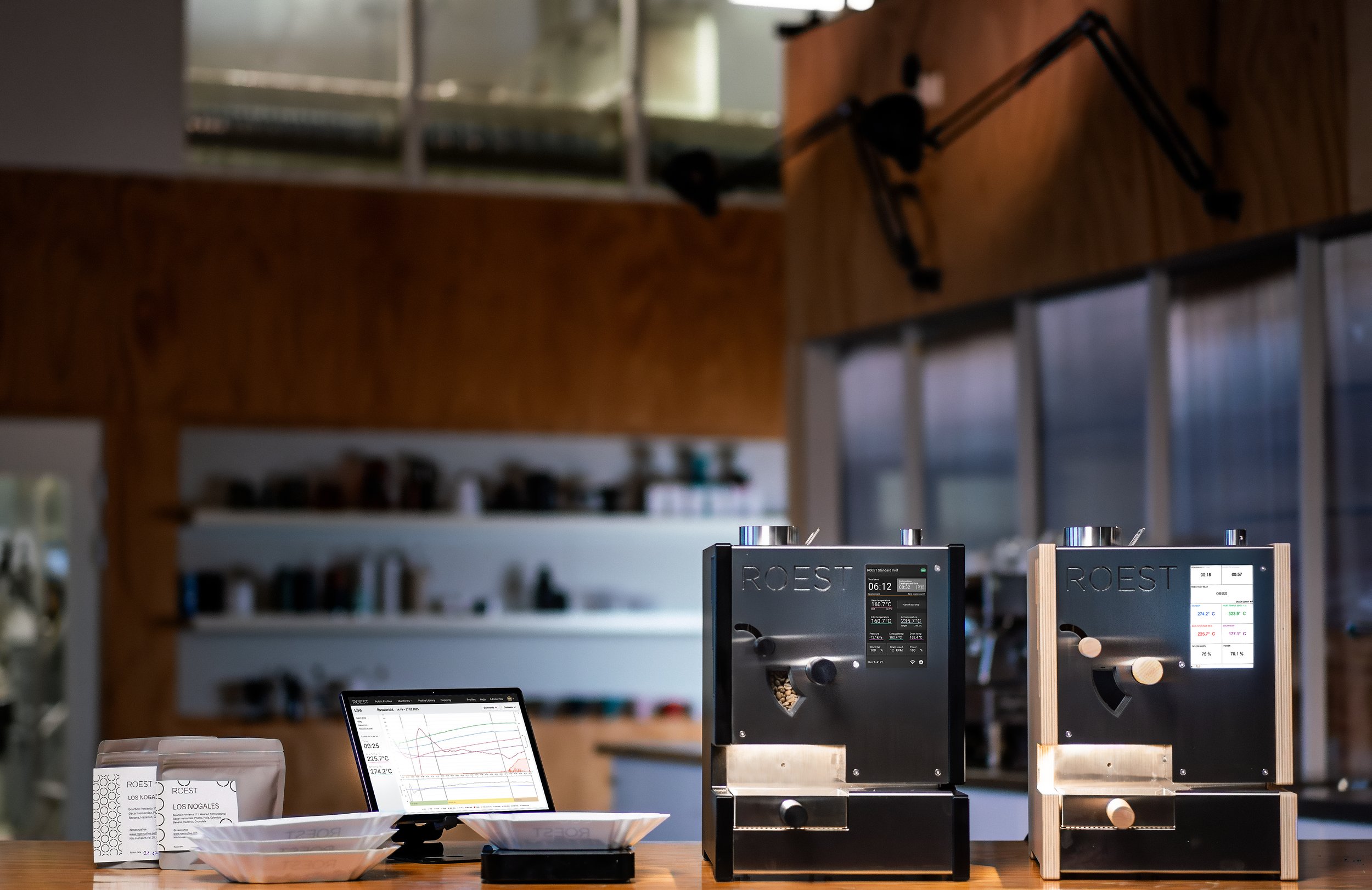
Learn about ROEST products, customers and more
ROEST BLOG
ROEST web portal - track your roasting sessions
Being able to store, analyze, and compare your roasting session is a good way to learn, develop as a roaster, and improve your sample roasting experience. We have developed a web platform, where you can be in full control of your roaster and roasting session, do adjustments based on your preferences, and make sure you’ll get the most out of your ROEST sample roaster.
Roasting coffee for research
Coffee geeks love to question and conquer what they already know about coffee. Some of them took the challenging path to uncover new wisdom and started coffee research. That’s where we come into the picture - the ROEST sample roaster became a popular choice of scientific equipment. To find out more, we interviewed our friends roasting on ROEST!
From prototype to award-winning sample roaster
From the very beginning, we had a clear vision; to build a sample roaster with unmatched consistency, digital precision and without any compromises when it comes to the final result: the perfect cup. We had several tries until we achieved the results we wanted. Learning from mistakes and staying true to our values is what today makes ROEST the best sample roaster on the market. And this is our journey…
Why you need a sample roaster for your coffee business
Are you thinking about getting into the coffee roasting business? Or maybe you have already started, and you keep browsing the right equipment for your roastery? If you are not sure whether a sample roaster is an important asset to purchase, keep reading.
Learning to ROEST with Long Miles Coffee Part 2
David Stallings from Long Miles Coffee shares the full and detailed report on developing profile for Long Miles Burundi samples. Interesting explanation of the transformation from Air Temperature profile into Power profile. Profiles for your ROEST are included.
Learning to ROEST with Long Miles Coffee Part1
For over a decade roasting technology has evolved significantly: new roasting technology, roasting techniques,… We are even able to share roasting profiles. David Stallings from Long Miles Coffee shares his roasting journey from gas roasters and spreadsheets to today’s technology that led him to “the most perfect small-scale machine yet“. Read more in the article written by David Stallings.
Roasting whiskey barrel-aged coffee - from sample to sales
Green coffee industry is improving and developing new techniques in order to bring to our customers new flavor experiences. Is your coffee roasting improving along? Roasters are constantly facing new challenges with a trend of experimental approach to processing. Have you ever tried roasting coffee sample that was soaked in whiskey oak barrels?
How to evaluate the quality of your coffee. Part 1: Green Bean Evaluation
What sets speciality coffee apart from any other grade on the market is the quality. To ensure it is delivered in the hands of your customers, there is a meticulous process every coffee business needs to follow. How should the Quality Control look like and what procedures are required? Read the article by Julia Rebecca Richardson.
The voice of coffee
Introducing a new feature: FIRST CRACK DETECTION. It turns your coffee roaster in to fully automatic roaster delivering higher consistency between your roasts. It registers the first crack for you and finishes the roast without any assistance.
Creating 50g profile - detailed report
Blazej was returning from Berlin when the lockdown due to COVID-19 started in Poland. To make the most out of unexpected situation, being in quarantine, he decided to improve his roasting skills – creating 50g profile on ROEST.
Tim Wendelboe: Sample roasting with ROEST
As a roaster, green coffee buyer, and owner of a farm in Colombia, sample roasting plays a big role in Tim’s business. He has shared his routines using ROEST in every part of his job. We hope you will get inspired:












